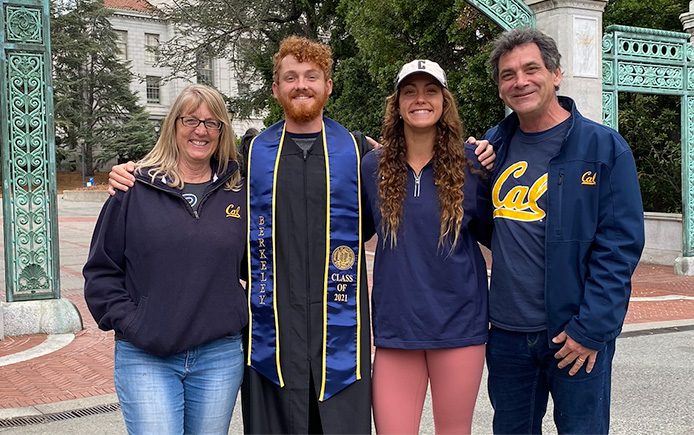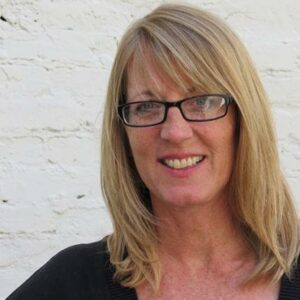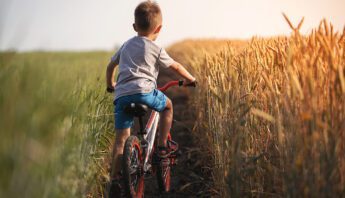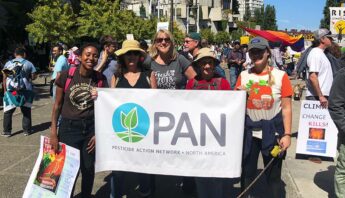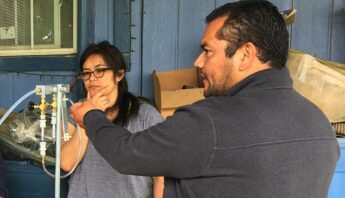Being a parent has shaped my 25 years at PAN in fundamental ways. The more I learned, the the more protective I felt of our daughter Linnea, and the more horrified I was about the millions of children around the world who are regularly exposed to dangerous pesticides.
This blog is part two of a three-part series highlighting some of what I’ve seen and learned during 25 years of advocacy at PAN. These storytelling pieces are a bit longer than PAN’s usual blogs. Part one is available here; Part three will be posted before my departure. — Kristin
Being a parent has shaped my 25 years at PAN in fundamental ways.
My first several years with the organization I was part of a job-share with another young mom, tag-teaming our organizing efforts to win a global ban of the fumigant pesticide methyl bromide. The more I learned about this dangerous chemical, the more protective I felt of our infant daughter Linnea — and the more horrified I was about the millions of children around the world who are regularly exposed to this and other pesticides.
In 1999 our son Connor was born. After my maternity leave I dove into work on the Stockholm Convention, an international treaty that targets persistent organic pollutants for global phaseout. These chemicals travel the globe and biomagnify up the food chain, building up in the fatty tissues of our bodies — and particularly in breastmilk.

Over the course of this advocacy work I learned that while breastmilk still provides incredible benefits for infants, it’s been compromised by chemical contamination in every corner of the planet.
The reality of this was hard to sidestep as I found quiet corners to pump my milk between sessions of the first treaty negotiations I attended in Bonn, Germany. So I didn’t try. Instead, I used this awful reality — shared with mothers across the globe — to lend urgency and focus to the work.
“Today’s goals for tomorrow’s generations”
Of course parents aren’t the only ones who care about the health of children and protecting future generations. I’ve been inspired by so many colleagues over the years — co-workers at PAN and partners across the network — who are driven by a fierce commitment to health and justice for all, and by the understanding that our choices today are creating the future for the next generation.
The 2009 issue of the PAN Magazine was curated around the theme “A Healthy Legacy.” I encourage you to take a moment to download it, and then take more time — over a cup or two of tea maybe — to enjoy this collection of thoughtful and thought-provoking articles. You’ll find an inspiring piece from renowned poet/scientist Sandra Steingraber, a call to action from Indigenous activist and former PAN Board member Shawna Larson, and a profile of young peach farmer Nikiko Masumoto.
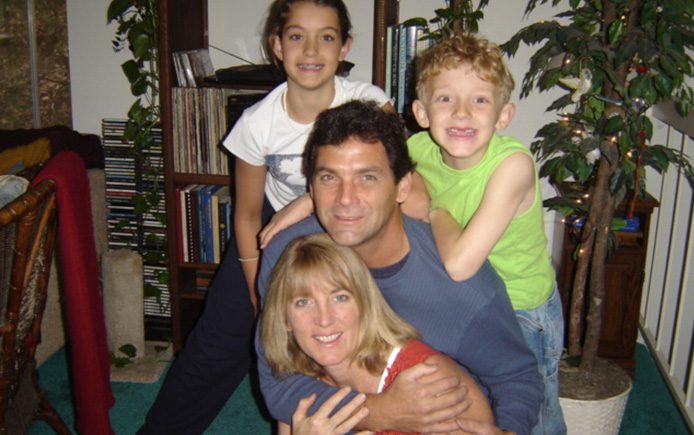
You’ll also find an article from my former self, contemplating what the future would look like for our daughter Linnea 20 years into the future. The piece explores why the six “generational goals” that had just been released by the Toward Tomorrow project hold such importance:
Envisioning goals for the next generation is a powerful exercise. It taps the deep sense of responsibility to the future we all hold—whether we are parents or not. It challenges us to imagine the kind of world we want for all future generations—children, adults and the elderly alike—not just what we will settle for. It enables us to work backwards from that vision to create the policies, programs and initiatives that will get us there.
Grassroots science for the win
I’m not a scientist, but throughout my career at PAN I’ve had the pleasure of working with some of the very best of them. In the process, I’ve learned just how important “grassroots science” can be — especially when it comes to children’s health.
Part of grassroots science is translating findings of scientific studies into tools that can be used for change. Over the years we’ve produced reams of accessible, action-oriented content for community activists and policy advocates alike.
Back in 2004, for example, I joined PAN scientists Susan Kegley and Margaret Reeves and organizer Skip Spitzer to write up our analysis of pesticide biomonitoring data from the Centers for Disease Control and Prevention. The resulting report, Chemical Trespass: Pesticides in Our Bodies and Corporate Accountability, made clear that pesticides had been found “at concerning levels” in the bodies of people across the country, including children — a fact that may have otherwise gathered dust in government files.
Then in 2012 PAN scientist Emily Marquez and I joined forces on a report highlighting how pesticides affect children’s health and development. After reviewing more than 200 peer-reviewed studies (that was mostly Em!), we found the strongest correlations of pesticide exposure with neurological harms and childhood cancers. Thousands of copies of A Generation in Jeopardy: How pesticides are undermining our children’s health and intelligence were distributed via partners across the country, along with multiple webinars, “conversation starter” fact sheets, storytelling blogs and other tools.
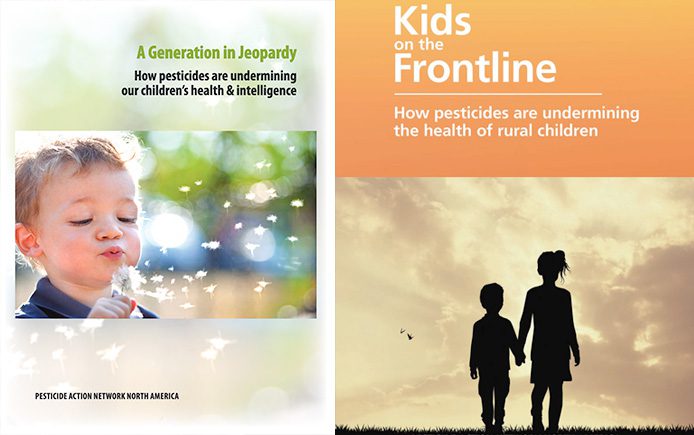
Four years later, Em and I worked together on Kids on the Frontline, a followup report focusing on the impacts of pesticides on rural children in agricultural states.
Of course the format of these action tools has changed over the years, and is still evolving. Our old PANUPS online newsletter — cutting edge at the time! — evolved into the GroundTruth blog, and the original 2001 online PesticideInfo.org database recently got an update of the vintage user interface that had served activists and researchers well for two decades.
Yes, science really does matter
The underlying goal, always, has been to put useful, accurate information into the hands of people who want to make change.
Grassroots science also means putting data collection tools like the Drift Catcher into the hands of community activists, and giving them the control of that data so they can decide how they want to use it. These on-the-ground monitoring efforts across the country were key to winning the recent ban of the brain-harming pesticide chlorpyrifos for use in food production.
Another piece of this work is pressing for policy decisions rooted in independent science. While this has always been a weakness in U.S. pesticide regulation, under the last administration, scientists — including those at PAN — had to take to the streets and push back hard against efforts to completely delink policy decisions from scientific evidence.
That’s why our first message to the current administration’s leaders included a call to “ensure that independent (not corporate) science is the basis for decisionmaking.”
It’s also why we’re strongly supporting the Protect America’s Children from Toxic Pesticides Act (S-3283), and encourage others to as well (click here to ask your Senators to co-sponsor!). Recently reintroduced by Senator Booker (D-NJ), this bill would revamp our antiquated system of pesticide regulation, recentering science — and public health — in the process.
The simple fact is that putting policies in place that protect children from pesticides will protect us all, because kids are especially vulnerable to the dangers these chemicals pose. As scientists clearly tell us, they are not “little adults.”
They do grow into them though. Linnea and Connor are now young adults themselves, finding their own paths, exploring how they can best contribute to meeting today’s urgent challenges and help build a better future for generations to come.
